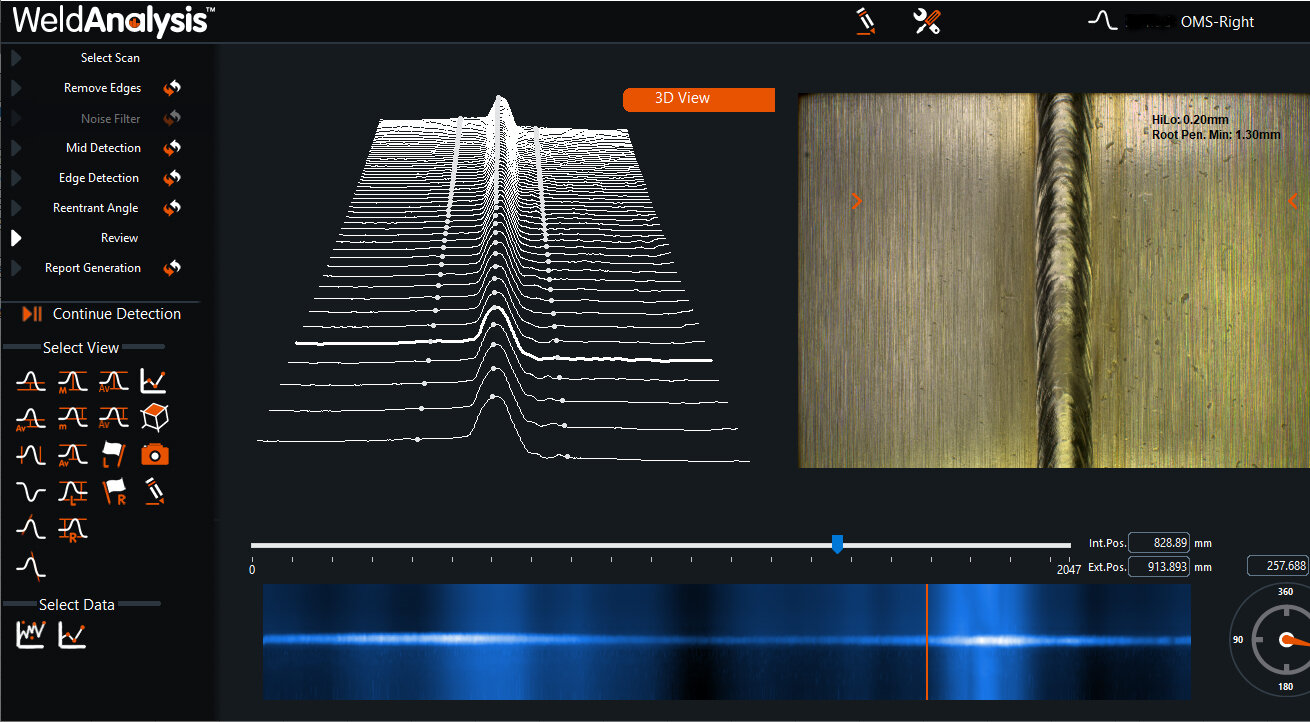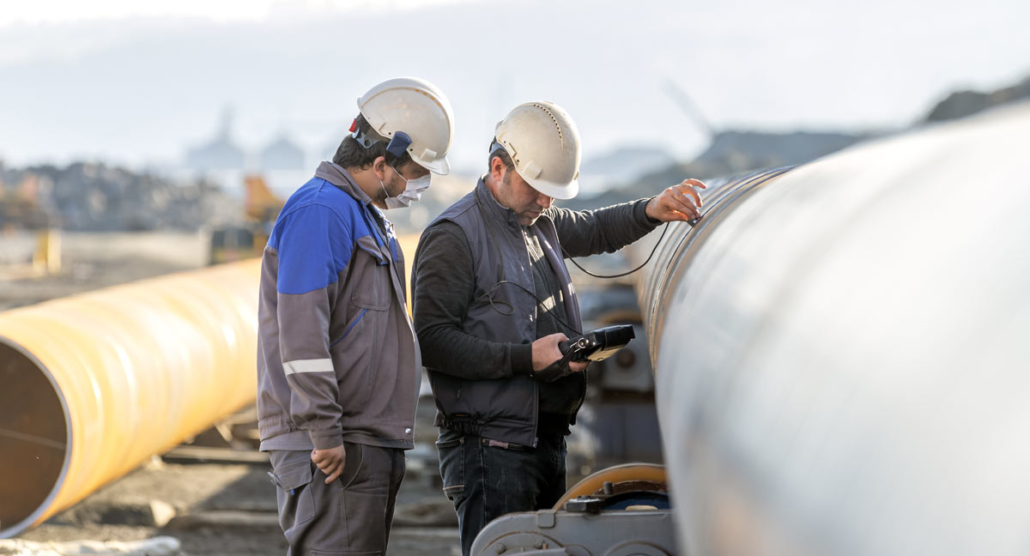Advanced Methods in Pipe Welding Evaluation: Technologies and Technologies for Improved Precision and Reliability in Weld Analysis
The landscape of pipe welding evaluation is undertaking a substantial improvement, driven by sophisticated strategies that promise to enhance both accuracy and integrity in weld assessments. Innovations such as automatic examination systems and progressed imaging technologies are redefining traditional techniques, while non-destructive testing methods ensure product integrity is maintained.

Value of Weld Inspection
Making sure the honesty of pipeline welds is essential to the total safety and security and reliability of commercial systems. Welds work as the architectural backbone of pipes, which carry a range of liquids under differing pressures. Issues in welding can result in catastrophic failings, causing not just considerable financial losses but also possible ecological disasters and threats to public safety. Therefore, rigorous inspection of welds is important to the lifecycle of pipeline infrastructure.
The relevance of weld inspection prolongs past plain compliance with regulative requirements. It acts as a positive procedure to recognize and remedy imperfections, such as insufficient combination, porosity, or cracks, before they escalate right into major problems. Efficient inspection techniques additionally add to the durability of pipes, decreasing upkeep expenses and enhancing functional efficiency.
Furthermore, thorough weld assessments foster trust fund amongst stakeholders, consisting of governing bodies, capitalists, and the neighborhoods offered by these pipes. By ensuring that all welds meet the required criteria, companies can mitigate dangers and copyright their reputations. In recap, weld evaluation is essential not only for operational integrity but additionally for the broader ramifications it holds for security and ecological stewardship.
Automated Assessment Solutions
The assimilation of automated assessment systems in pipe welding has reinvented the technique to making certain weld high quality and integrity. These systems use advanced robotics and synthetic knowledge to carry out evaluations that are not just quicker however additionally a lot more consistent than traditional methods. Automated systems can cover substantial lengths of pipelines successfully, catching data that human inspectors may overlook due to fatigue or ecological conditions.
Among the key advantages of automatic inspection systems is their capability to operate in harmful settings, reducing the risk to human inspectors. They utilize different non-destructive screening (NDT) techniques, such as ultrasonic screening and magnetic fragment inspection, to assess weld integrity without jeopardizing the structure. The data gathered is processed in real-time, permitting for prompt responses and punctual rehabilitative activities when flaws are determined.
Moreover, automated systems promote the standardization of examination procedures, ensuring that each weld is reviewed versus constant requirements. This not just improves the dependability of results however also streamlines compliance with regulatory criteria. As sectors remain to focus on security and functional effectiveness, the function of automatic assessment systems in pipe welding will definitely broaden, paving the means for extra advanced quality guarantee methods.
Advanced Imaging Technologies
Frequently utilized in contemporary pipe welding assessments, advanced imaging modern technologies have actually considerably enhanced the capability to discover and analyze weld issues. Methods such as electronic radiography, computed tomography, and thermographic imaging provide inspectors with high-resolution images that disclose sub-surface defects and architectural disparities that might be unnoticeable to the nude eye.
Digital radiography utilizes digital sensing units to catch photos, permitting instant testimonial and improved photo contrast. This brings about faster assessments and enhanced precision in identifying essential problems. Calculated tomography, on the various other hand, provides three-dimensional imaging, allowing inspectors to picture intricate geometries and assess the stability of welds from several angles - Pipeline Welding Inspection. This deepness of evaluation is important for identifying concerns that traditional techniques may More Bonuses neglect.
Thermographic imaging uses infrared technology to discover variations in temperature level, identifying areas of prospective weakness or anxiety within the weld. These sophisticated imaging modern technologies not just boost issue discovery prices yet likewise minimize the time and resources required for pipe inspections. Therefore, they play an important role in maintaining pipeline safety and security and integrity, making sure compliance with industry criteria while lessening functional risks.
Non-Destructive Testing Methods
Making use of numerous methods, non-destructive testing (NDT) techniques are vital in pipeline welding inspections, permitting the analysis of weld stability without compromising the product's architectural stability. NDT encompasses a variety of techniques, including ultrasonic screening (UT), radiographic testing (RT), magnetic particle screening (MT), and dye penetrant screening (PT) Each method has distinct benefits and applications depending on the details demands of the inspection.
Ultrasonic screening utilizes high-frequency acoustic waves to spot inner problems, supplying accurate dimensions of weld thickness and honesty. Pipeline Welding Inspection. Radiographic testing uses X-rays or gamma rays to create pictures of the weld, exposing inner defects click now that might not be visible on the surface. Magnetic bit screening is efficient for discovering surface area and near-surface stoppages in ferromagnetic materials, while color penetrant testing highlights surface area cracks by utilizing a colored color
Incorporating these NDT techniques right into pipeline welding assessments enhances the precision and integrity of weld evaluations, making certain that potential failures are recognized early. As industries require greater requirements for safety and efficiency, the function of NDT in preserving the integrity of welded structures proceeds to be pivotal in pipeline building and upkeep.

Future Fads in Weld Analysis
As we seek to the future of weld assessment, innovations in modern technology are poised to change the techniques employed for reviewing pipeline honesty. The assimilation of fabricated knowledge (AI) and maker discovering in inspection procedures is anticipated to improve the precision of defect discovery and predictive upkeep. These technologies permit real-time information analysis, making it possible for inspectors to determine possible problems prior to they escalate into substantial issues.
Additionally, using drones equipped with innovative imaging systems is acquiring grip. These aerial examinations can cover large areas promptly, capturing high-resolution photos and data that can be evaluated for issues in hard-to-reach places. This not just improves safety yet also boosts performance in the assessment process.
In addition, the development of smart sensors embedded in pipe systems offers the potential for the original source continuous monitoring. These sensors can discover modifications in pressure, temperature, and vibrations, providing valuable insights right into the wellness of the welds with time.

Conclusion
Finally, the assimilation of innovative methods in pipeline welding inspection significantly boosts the precision and dependability of weld evaluations. Developments such as automated examination systems, progressed imaging innovations, and non-destructive testing approaches play a critical duty in enhancing problem detection prices and promoting positive maintenance techniques. As these technologies proceed to progress, they will further make sure the security and efficiency of pipe systems, eventually adding to the honesty of important facilities.
